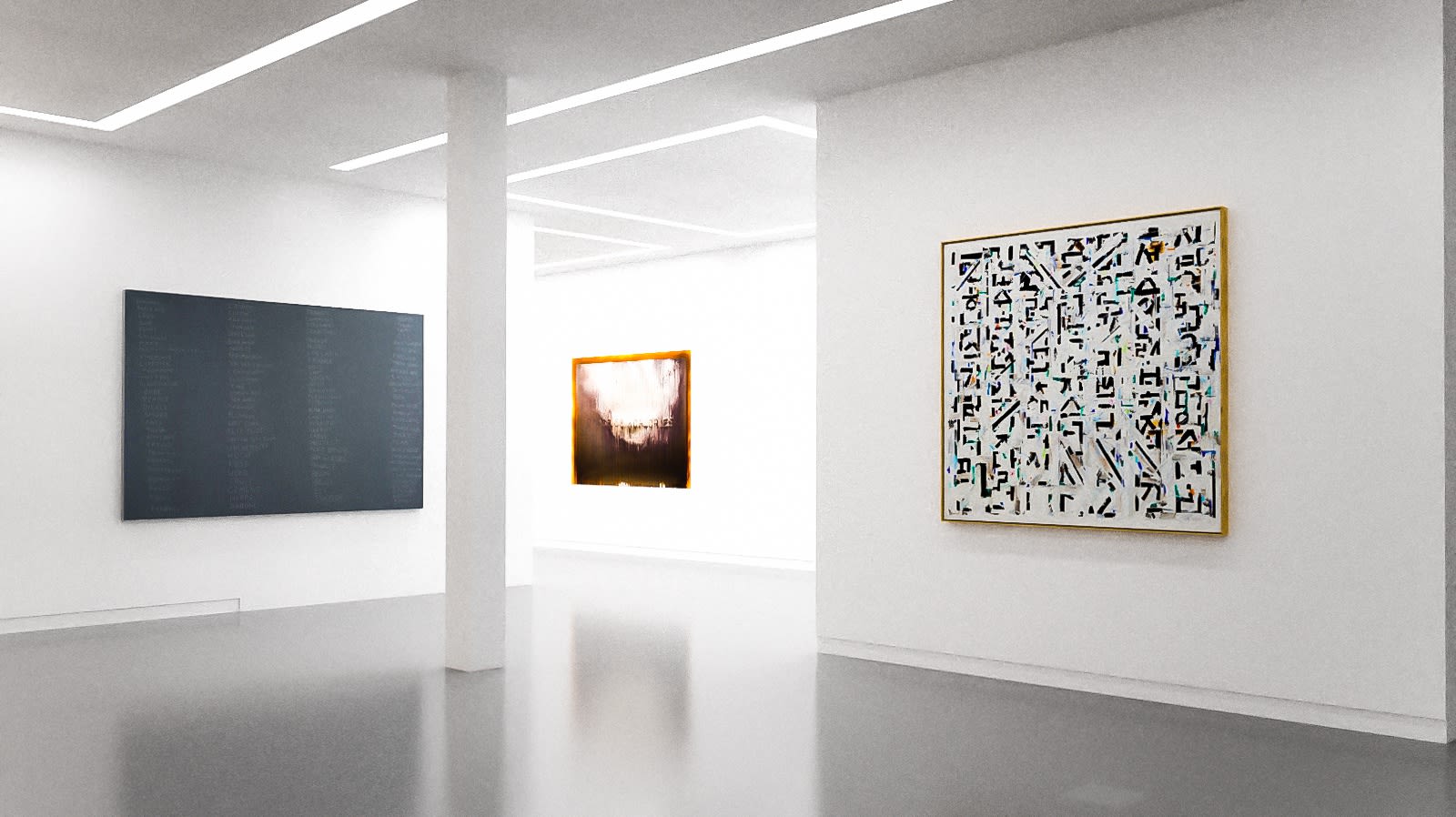
The Written Word is an online exhibition examining the visual value of the verbal.
What is the value of a picture? Just open your eyes to receive one, or close your eyes to remember one. Offer an artist a thousand words for a picture and you’ll learn what proverbs are worth. Yet, if utterances are fleeting and any story can be told with images, why would a visual artist ever need to rely on words? Each artist featured in The Written Word has their own reasons for making art you have to read in order to really see.
Vito Acconci’s Name Calling Chair (1990) strives beyond beauty and utility towards a comic truth, while Glen Ligon’s Study for Negro Sunshine II, #31 reveals the anesthetizing effect of repetition on even the most confounding utterance.
Roger Brown’s The Writing in the Sky revels in the circular logic of a picture undermining the power of words that establish the value of pictures; meanwhile, a single proposal from Allen Ruppersberg’s iconic Honey, I rearranged the collection series suggests language’s limitless, if sometimes senseless, potential for codification.
Manish Nai’s book sculptures mobilize words as raw material for compacted objects, with the aesthetic inquiry: what is a book that cannot be read, or a sculpture that can’t fully be seen?
Young-Il Ahn’s Self-Reflection I uses script to bridge antiquity and modernity, writing and then erasing traditional Hangul text until the written word communicates purely as an image.
Deborah Kass deploys words to communicate brief, authoritative messages, infusing meaning into the cultural conversation, while in Patrick Chamberlain’s text paintings, words become abstract elements in formal space, same as color, shape, texture, and line.
For Jeffrey Gibson, words form intertextual reminders, lifelines to memories of music, feelings, and communities bound by history, whereas in Scott Reeder’s paintings and neon sculptures, the written word is exactly what it appears to be: a conveyance of thought, unencumbered by conceptual abstraction. Or is it?
Though text is essential for every work in The Written Word, their mutability proves that like the world, the word is not always what it seems.
See more works in the viewing room






